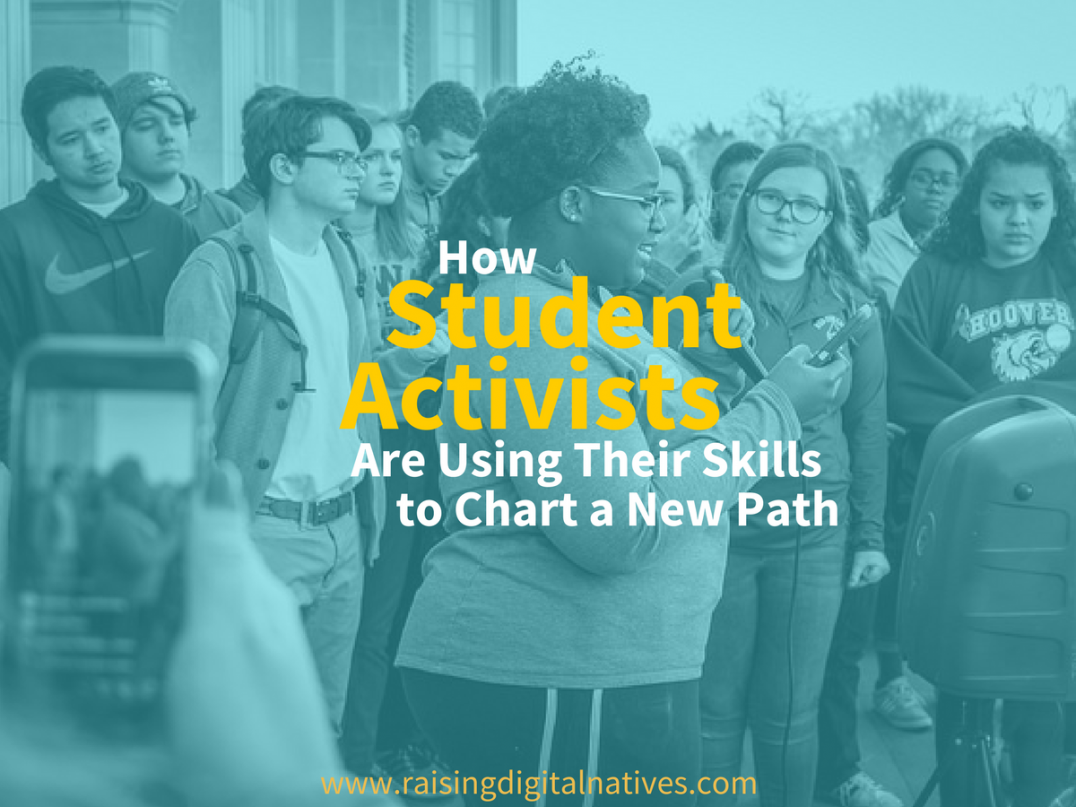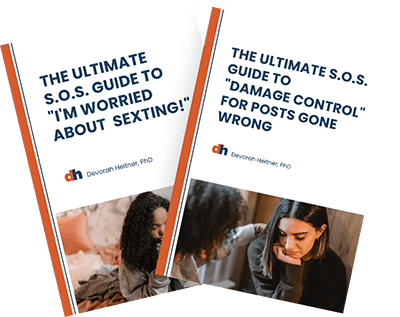 While many adults worry about kids misusing their digital devices, I am consistently impressed by the ways many young people are using social media to make positive changes in the world.
While many adults worry about kids misusing their digital devices, I am consistently impressed by the ways many young people are using social media to make positive changes in the world.
The conversation became very personal for me, following the outspoken students at Marjory Stoneman Douglas High School in Parkland, FL. Dealing with a traumatic experience and unspeakable losses, these young people have been speaking out on multiple platforms – and they are being heard and even getting results in ways that we haven’t seen before.
On the day of the Parkland shooting, I stopped at the bank and the live footage of students being evacuated was playing over the tellers’ heads. I was horrified and rooted to the spot. My own experience came roaring back, vivid and present once again. You see, most people in my day-to-day life don’t know I survived a school shooting.
In 1992, when a fellow student brought an automatic weapon to our little Western Massachusetts college campus, it was covered by national media, but there was no peer-to-peer media. Very few of us spoke publicly about the experience at the time. We didn’t call it a “mass shooting” or a “school shooting.” It seemed like an aberration, an isolated event.
It was premeditated and planned, however. The killer had waited until his 18th birthday so he could acquire a semi-automatic weapon at a local sporting goods store. On a cold day in December, he came to campus with that weapon and began his killing spree. He had enough ammunition to kill all of us, but by providence or luck or both, his gun jammed. The majority of us were saved that day. Two people were killed, included my friend Galen Gibson. Four others were wounded.
One of those wounded, Joshua Faber, wrote his account of the incident for his college newspaper years later while he was a graduate student at MIT in 2000. Galen Gibson’s father eventually wrote a book reflecting on what happened as did another classmate, Anne Thalheimer. But we didn’t have an outlet to share our experiences in the moment, so most people didn’t hear our stories about what it is like to survive an event like this. Many of us did go to statehouse and other protests to demand a close in the loophole that had allowed the killer to purchase his weapon, but there wasn’t the groundswell of response we are seeing now, following the Parkland massacre.
It took me 25 years and a frozen moment in line at the bank to tell my story. In light of the inspiring outspoken leadership from a set of truly remarkable student activists in Florida, I shared my own story in Time magazine.
My goal is aligned with the Parkland survivors – harness this surge of interest and shift in long-held dogma to challenge lawmakers to change the laws to reduce the likelihood – or even prevent – future mass shootings.
I wrote the article for the young activists, who emerged from this traumatic situation with their voices loud, their message unified and clear, and with a very shrewd use of social media to plan actions and share their critiques of politicians and organizations who have let inaction reign on this issue.
Here is my message to these young people, excerpted from the article:
“You have inspired me. As a parent, as an educator, as someone who is deeply optimistic about the ways young people can make change in this world, I am excited to see what you will do. Your generation has the the tools and the savvy and the motivation. Rise up. Fight back. Show up – whether it’s in your town, your state capital, in D.C., or on Twitter. Channel your grief and frustration and rage into action. This is going to be a long struggle and the trauma of your losses may overwhelm you at times. Stay strong. Take care of each other. We are listening. We are with you.”
The very existence of social media is one of the crucial differences between then and now. In February of this year, another Simon’s Rock classmate, Jesse Doris, published a thoughtful and moving reflection in the New Yorker about the differences between our experience in 1992 and the groundswell of change happening now. He reflects on how that may be due (at least partially) to the ways that today’s generation communicate. They simply have more access to an audience and more reach in the form of social channels, and thereby are more generally practiced and prepared for public discourse. Jesse’s point in the article is that the private grief we experienced in those pre-social media days is not available to this generation, and perhaps that lack of privacy will lead to change.
Like many things in today’s digital landscape, this poses a new set of problems. In light of this, what does citizenship – and digital citizenship – look like? The Parkland teenagers are showing us right now, in real time. It looks just like this, taking to Twitter to organize a national march, planning a boycott, and crucially, networking with other student activists who have been working hard for years with far less media attention and institutional support.
It’s amazing, and why I said in my article that this is the first time I’ve had hope in 25 years.
You can read the whole piece here on Time.com – and spoiler alert, if you ask me if I think “smartphones have destroyed a generation,” I am going to answer with a resounding… no.
I Am a School Shooting Survivor. This Is the First Time I’ve Had Hope in 25 Years
 Photo credits: “Students Walkout Against Gun Violence” by Phil Roeder is licensed under CC BY 2.0. Changed from original: Added text and color overlays. Screenshot of Time.com captured March 13, 2018.
Photo credits: “Students Walkout Against Gun Violence” by Phil Roeder is licensed under CC BY 2.0. Changed from original: Added text and color overlays. Screenshot of Time.com captured March 13, 2018.

